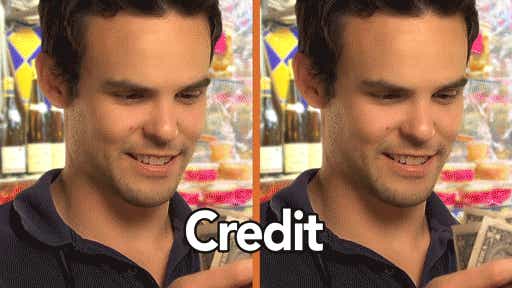4 Keys To Placing Your First Credit Spread

4 Keys To Placing Your First Credit Spread
Credit spreads are generally the strategy of choice around here at tastylive since they are a fairly easy to grasp strategy and are risk defined (meaning you know how much you stand to gain or lose before you even place the trade).
There are two types of credit spreads:
- Vertical Call Spread - used when you have a bearish assumption of the market
- Vertical Put Spread - used when you have a bullish assumption of the market
Instead of going in depth on the topic of credit spreads, we instead wanted to break down a few of the things you should think about before placing a credit spread. Without further ado, here are four keys to trading vertical credit spreads...
1) Get Paid For Credit Spreads
A credit spread is simply a spread that you sell (regardless of whether it is a put spread, or call spread). When you sell a spread, you receive a credit for the trade. What does that mean exactly?
That means you receive cash up front for the trade! The amount you sold the spread for is instantly added to your account. Credit spreads are risk defined spreads so your max profit and max loss are both defined before you even place the trade.
Max profit is the credit you receive for selling the spread - you can't make any more money than the initial credit received. Max loss is the difference between the width of the spread and the credit received for selling the spread.
2) PICK A DIRECTION: CALLS OR PUTS
As we mentioned before, when you sell a vertical put spread, your market assumption is bullish. If you are selling a vertical call spread, your market assumption is bearish.
So what do you think? Up or down?
3) FIND HIGH IV UNDERLYINGS
Once you’ve decided on a direction, you should look at the market conditions to maximize returns from your credit spread.
The ideal time to sell verticals is when the underlying has a high IV Rank. Why is that exactly?
The basic answer to that question is that when an underlying has a high IV rank, option prices are more expensive so you can receive a bigger credit up front than you would from an underlying with low IV rank.
4) USING PROBABILITIES TO GAIN AN EDGE
So how do you know what a good price is for a trade (aka how much credit you should collect from the trade)?
That is a tough question to answer, but what might be more important for new traders is deciding on a probability of profit (P.O.P.) that you are comfortable with.
Probability of profit is a calculation (the calculation is built into the tastytrade trading platform) that will show you what the probability of you making at least $.01 on a trade is (based on statistics and historical pricing data). Rather than focusing on how much credit you should receive, focus on the probability of your trade being successful!
Oh, and one last thing...you can use credit spreads to get a higher return on capital while at the same time taking on less risk and using less buying power than doing something like selling a naked option.
There you go...Four simple keys to figuring out vertical credit spreads...and trading better with them!
Learn more about options trading with Step Up to Options.
Options involve risk and are not suitable for all investors. Please read Characteristics and Risks of Standardized Options before deciding to invest in options.
tastylive content is created, produced, and provided solely by tastylive, Inc. (“tastylive”) and is for informational and educational purposes only. It is not, nor is it intended to be, trading or investment advice or a recommendation that any security, futures contract, digital asset, other product, transaction, or investment strategy is suitable for any person. Trading securities, futures products, and digital assets involve risk and may result in a loss greater than the original amount invested. tastylive, through its content, financial programming or otherwise, does not provide investment or financial advice or make investment recommendations. Investment information provided may not be appropriate for all investors and is provided without respect to individual investor financial sophistication, financial situation, investing time horizon or risk tolerance. tastylive is not in the business of transacting securities trades, nor does it direct client commodity accounts or give commodity trading advice tailored to any particular client’s situation or investment objectives. Supporting documentation for any claims (including claims made on behalf of options programs), comparisons, statistics, or other technical data, if applicable, will be supplied upon request. tastylive is not a licensed financial adviser, registered investment adviser, or a registered broker-dealer. Options, futures, and futures options are not suitable for all investors. Prior to trading securities, options, futures, or futures options, please read the applicable risk disclosures, including, but not limited to, the Characteristics and Risks of Standardized Options Disclosure and the Futures and Exchange-Traded Options Risk Disclosure found on tastytrade.com/disclosures.
tastytrade, Inc. ("tastytrade”) is a registered broker-dealer and member of FINRA, NFA, and SIPC. tastytrade was previously known as tastyworks, Inc. (“tastyworks”). tastytrade offers self-directed brokerage accounts to its customers. tastytrade does not give financial or trading advice, nor does it make investment recommendations. You alone are responsible for making your investment and trading decisions and for evaluating the merits and risks associated with the use of tastytrade’s systems, services or products. tastytrade is a wholly-owned subsidiary of tastylive, Inc.
tastytrade has entered into a Marketing Agreement with tastylive (“Marketing Agent”) whereby tastytrade pays compensation to Marketing Agent to recommend tastytrade’s brokerage services. The existence of this Marketing Agreement should not be deemed as an endorsement or recommendation of Marketing Agent by tastytrade. tastytrade and Marketing Agent are separate entities with their own products and services. tastylive is the parent company of tastytrade.
tastyfx, LLC (“tastyfx”) is a Commodity Futures Trading Commission (“CFTC”) registered Retail Foreign Exchange Dealer (RFED) and Introducing Broker (IB) and Forex Dealer Member (FDM) of the National Futures Association (“NFA”) (NFA ID 0509630). Leveraged trading in foreign currency or off-exchange products on margin carries significant risk and may not be suitable for all investors. We advise you to carefully consider whether trading is appropriate for you based on your personal circumstances as you may lose more than you invest.
tastycrypto is provided solely by tasty Software Solutions, LLC. tasty Software Solutions, LLC is a separate but affiliate company of tastylive, Inc. Neither tastylive nor any of its affiliates are responsible for the products or services provided by tasty Software Solutions, LLC. Cryptocurrency trading is not suitable for all investors due to the number of risks involved. The value of any cryptocurrency, including digital assets pegged to fiat currency, commodities, or any other asset, may go to zero.
© copyright 2013 - 2025 tastylive, Inc. All Rights Reserved. Applicable portions of the Terms of Use on tastylive.com apply. Reproduction, adaptation, distribution, public display, exhibition for profit, or storage in any electronic storage media in whole or in part is prohibited under penalty of law, provided that you may download tastylive’s podcasts as necessary to view for personal use. tastylive was previously known as tastytrade, Inc. tastylive is a trademark/servicemark owned by tastylive, Inc.



